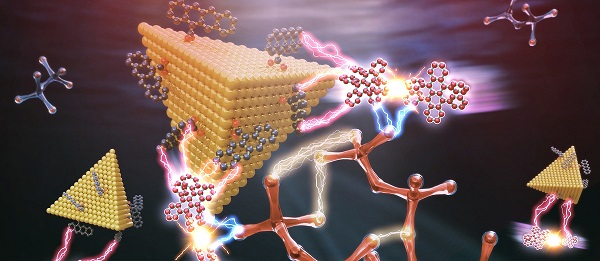
A research group led by Prof. WU Kaifeng from the Dalian Institute of Chemical Physics (DICP) of the Chinese Academy of Sciences (CAS) has reported the efficient near-infrared photon upconversion sensitized by lead-free semiconductor nanocrystals, and demonstrated its novel application in solar synthesis.
The study was published in Nature Photonics on Feb. 6.

Upconversion of near-infrared photons to visible photons can boost the performance of photovoltaics, photoredox-catalysis and phototheranostics. Sensitized triplet-fusion is a promising means for photon upconversion.
However, current photosensitizers capable of near-infrared absorption often contain either precious or toxic elements, for example, palladium- or platinum-complexes and lead chalcogenide nanocrystals.
In this study, the researchers reported zinc-doped CuInSe2 nanocrystals as a low-cost and environmentally-benign sensitizer for near-infrared-to-visible upconversion, which achieved external quantum efficiency of 16.7% for this spectral range.
"Organic synthesis under sunlight, or solar synthesis, has been a century-long idea, which was pioneered by Ciamician et al. But organic chemists' vision has been limited to utilizing visible photons in sunlight," said Prof. WU. "Our study extends the reach of solar synthesis to both visible and near-infrared photons abundant in sunlight, which is poised to strongly boost this technology."

86-10-68597521 (day)
86-10-68597289 (night)

52 Sanlihe Rd., Xicheng District,
Beijing, China (100864)

